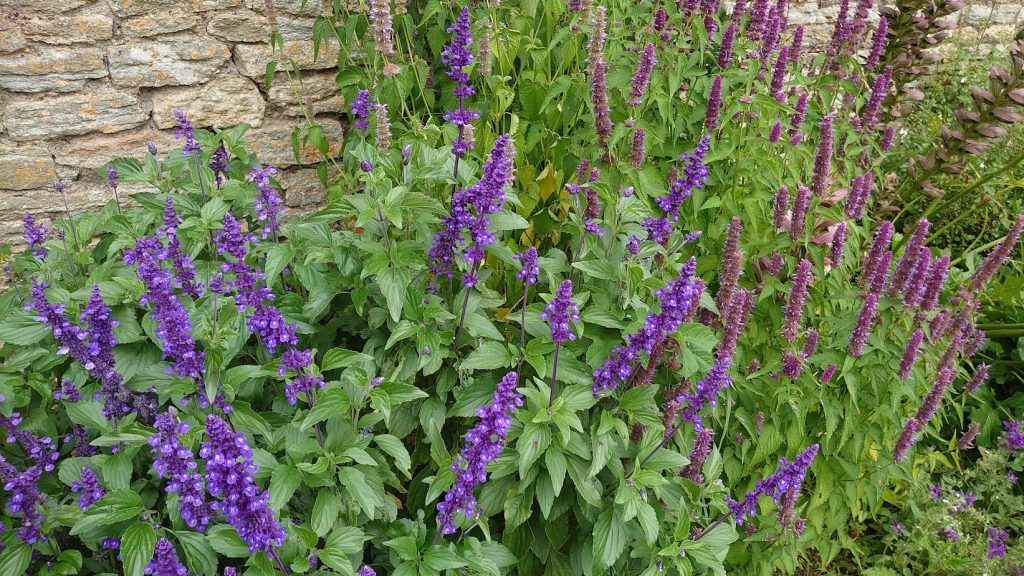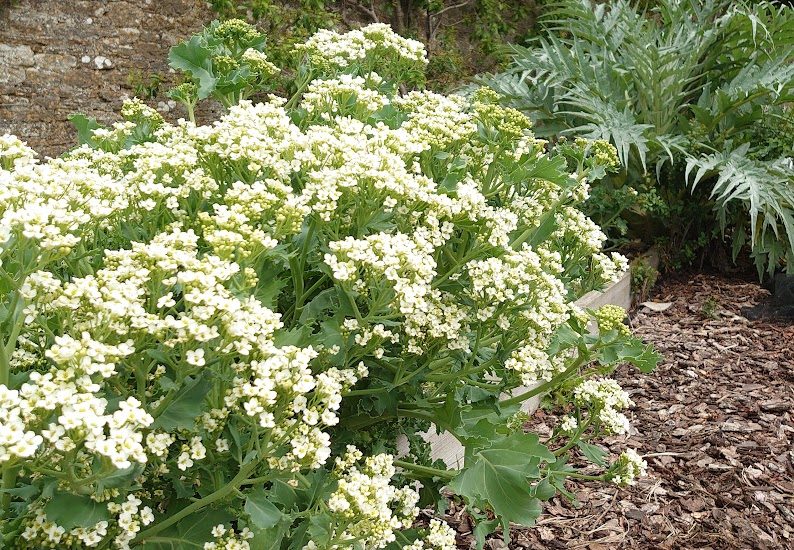After a summer of high temperatures and little rain, gardening magazines, blogs and posts are full of recommendations for drought-tolerant plants. But are drought tolerant plants the answer?
Looking around my garden, its clear that the classic drought-tolerant perennials have survived well – my eryngiums, rubeckias, heleniums, euphorbias and salvias have fared well. And all they have had is the odd bucket of water.
But then my soil, which is a heavy loamy clay and retains moisture, was heavily mulched to improve the water retention further.
As I have written many times, the key to plants surviving these extremes is a healthy soil with lots of fungi, especially mutualistic mycorrhizal fungi. These fungi are so important in times of environmental stress as their hyphae extend out from the roots of their partner plants into find water and nutrients.
Are drought tolerant plants the answer?
However, I get worried about filling the garden with drought tolerant plants as our climate is so changeable as we are in a state of transition. Yes, we are moving to a warmer climate, especially in southern England, but we are not there yet. This transition period makes things really tricky. I often describe climate change weather as topsy turvy as it flips from one extreme to another. Just think about recent years. August 2019 saw a period of incredibly wet weather and NT Lyme Hall was damaged by flash flooding. May 2021 was the coldest on record but we’ve also had some of the warmest Februaries.
As our climate warm up it is increasingly likely that our winters may be mild but wet – the type of climate that these drought tolerant perennials will not enjoy – they really do not like wet feet in winter so we will have to pay careful attention to drainage. It may be fine if you live on sandy soils but my heavy clay soils make winter conditions quite difficult for the sun lovers.

The winners
There have been some outstanding plants in the garden this year that have coped with NO watering. My hardy geraniums have survived in full sun without any water – these truly resilient plants cope with all sorts of conditions – shade and full sun, rain and drought. I love the way they cover the ground, protecting the soil and suppressing weeds while flowering over a long period.
My salvias have been stunning and are still performing as we approach October. In the veg plot I have had an outstanding crop of chickpeas! But the runner beans didn’t like the heat at all
But the winners have to be my halophytes – plants that typically grow on salt marshes, shingle banks and other coastal habitats where the conditions are truly extreme. Living in a salt water environment they are adapted to a physiological drought – just like the Rime of the Ancient Mariner – “Water water everywhere, Nor any drop to drink”. They have all sorts of adaptations, especially their leaves – thick, succulent, hairy, small, waxy – all adaptations to growing in an environment where fresh water is in short supply. And interest in this group of plants is growing. As our coastal areas suffer from more inundation from rising sea levels, we may have to rely more on growing plants in saline areas.
Halophytes for the garden
Halophytes are known for their bioactive compounds, being high especially in phenolics and flavonoids, which makes them healthy options and we need to grow more of them. Not surprisingly, I grow a number of edible halophytes in the garden, in particular sea kale, sea beet and summer purslane.

Here’s a few to try
Sea kale (Crambe maritima) has to be my favourite, being both ornamental and edible. It’s a relative of the cabbage and has fleshy grey-green leaves and a mass of white flowers in late spring. It’s the young shoots that are harvested – they are a bit like asparagus and can be blanched like rhubarb.
Sea beet or sea spinach (Beta maritima) is a truly resilient plant and quite a thug so beware if you decide to grow this edible. The leaves look like a glossy spinach and are picked in the same way. Its rich in vitamin C and was reported as being picked by sailors to prevent scurvy. It has a scrambling growth habit so will cover a large area quite quickly. I don’t allow it to flower as seedling appear everywhere and they can cross pollinate with chard and spinach. And I suspect its quite allelopathic as I can’t grow much near it.
Summer purslane (Portulaca oleracea) has a fleshy, edible leaf that I grow for salad. Said to be the best source for omega-3. Being half hardy, I grow from seed each year and it copes well with heat and drought.
Saltbush (Atriplex halimus) – a shrub with silver grey leaves that is extremely drought tolerant
Sea blite (Suaeda maritima) low growing perennial with small narrow leaves
But there are so many others to try capers (Capparis spinosa), buck’s horn plantain (Plantago coronopus), golden samphire (Inula crithmoides) to name a few
